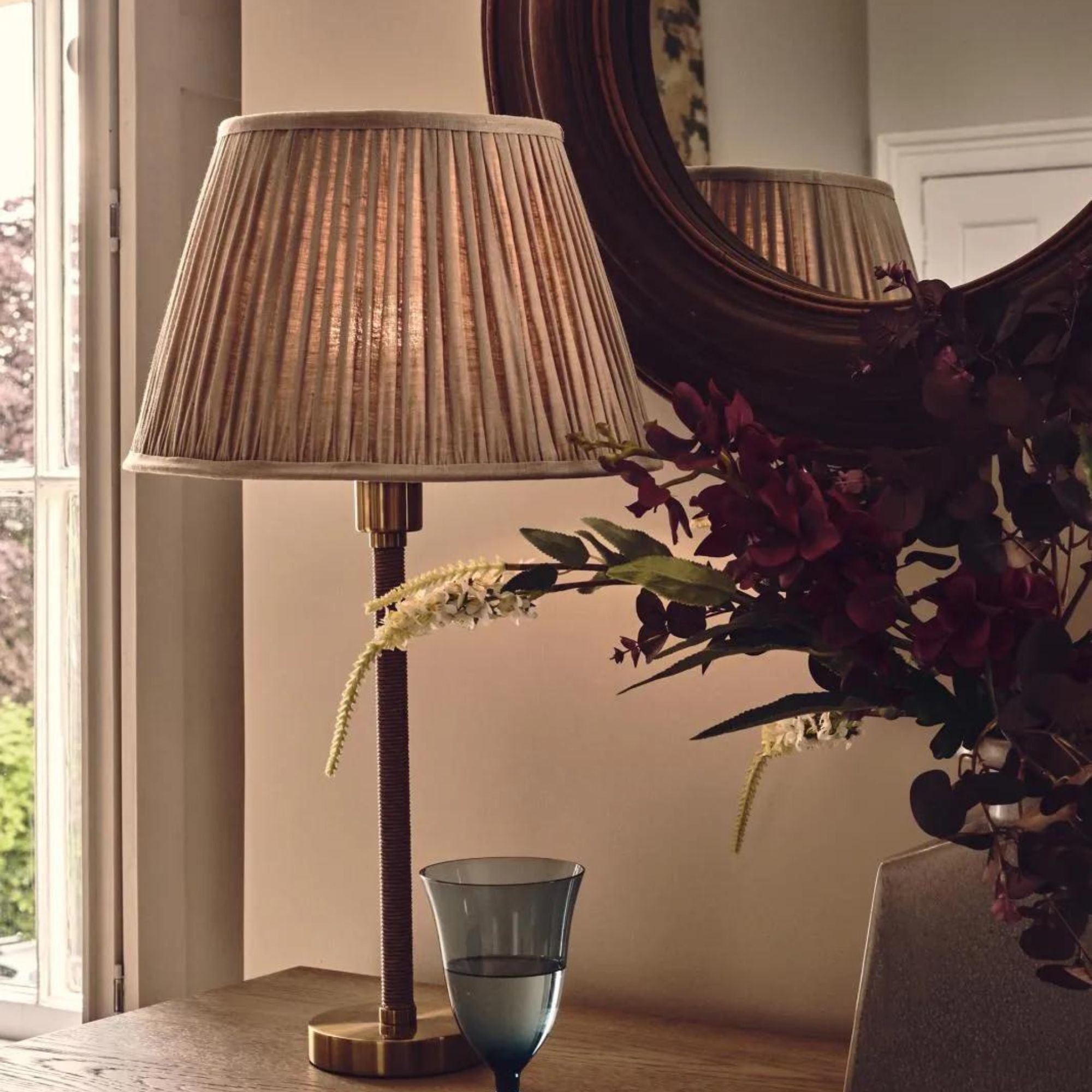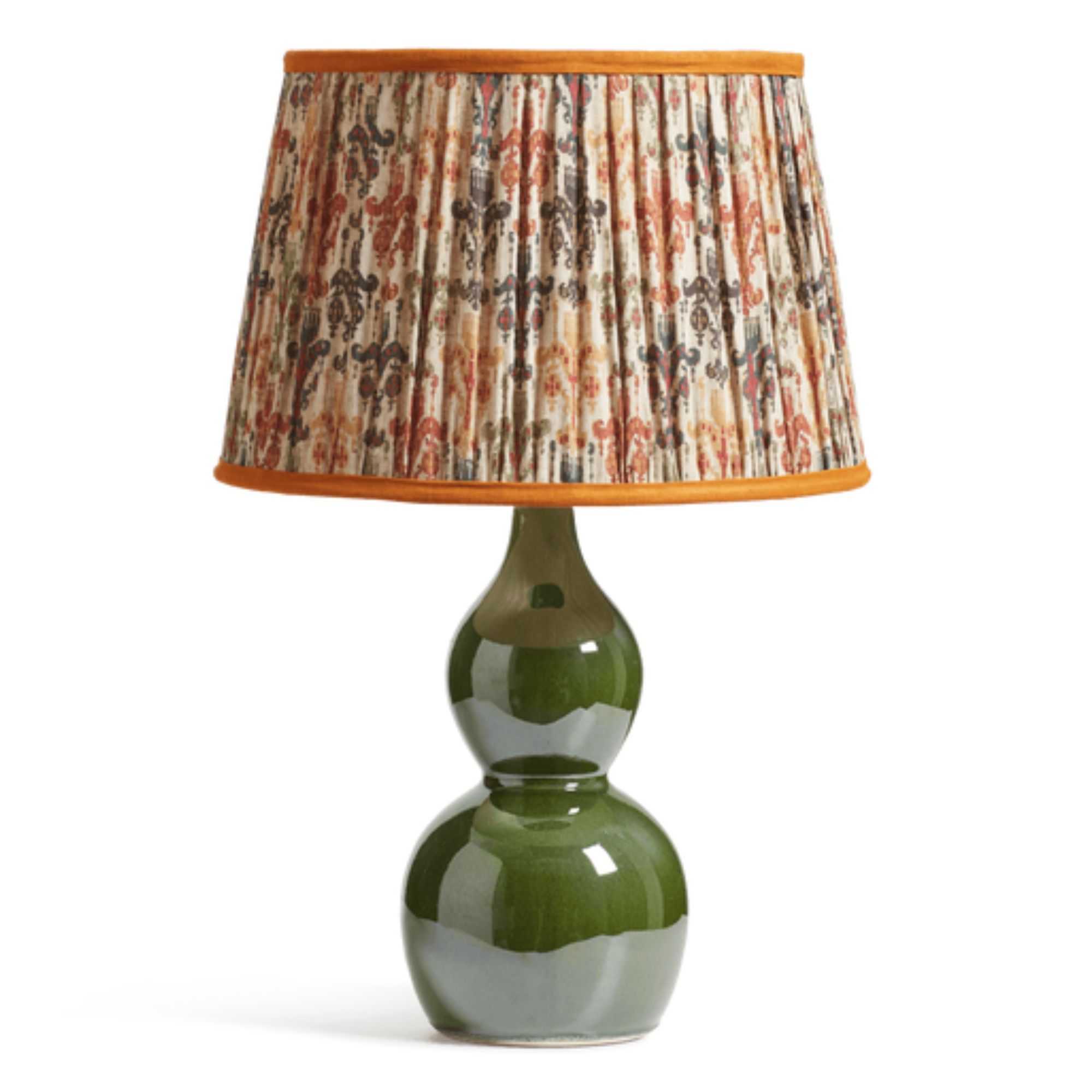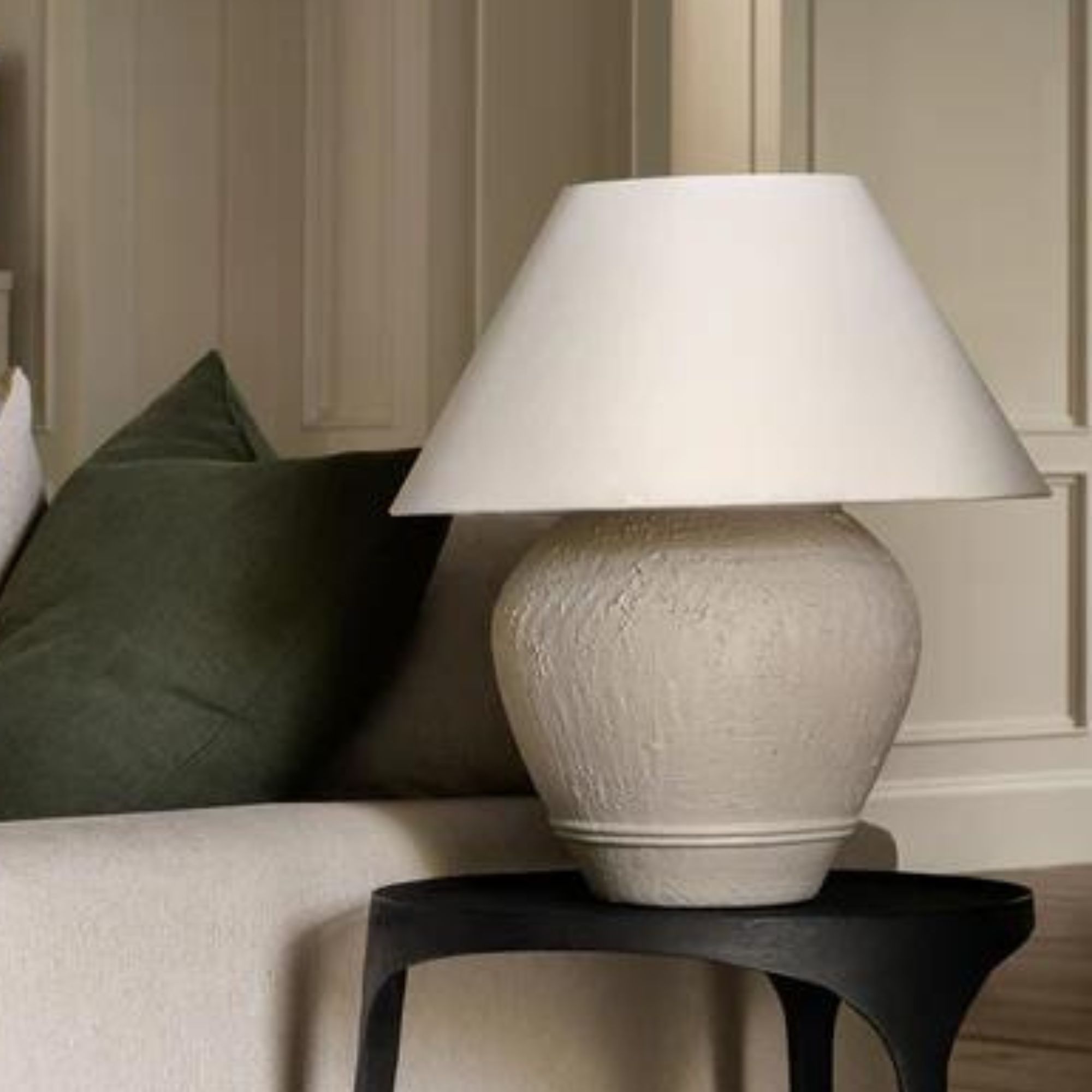What is cottage style? And how to add this cozy English aesthetic to your interiors
Interior designers weigh in on what defines cottage style, and how to inject this charming decor into your space
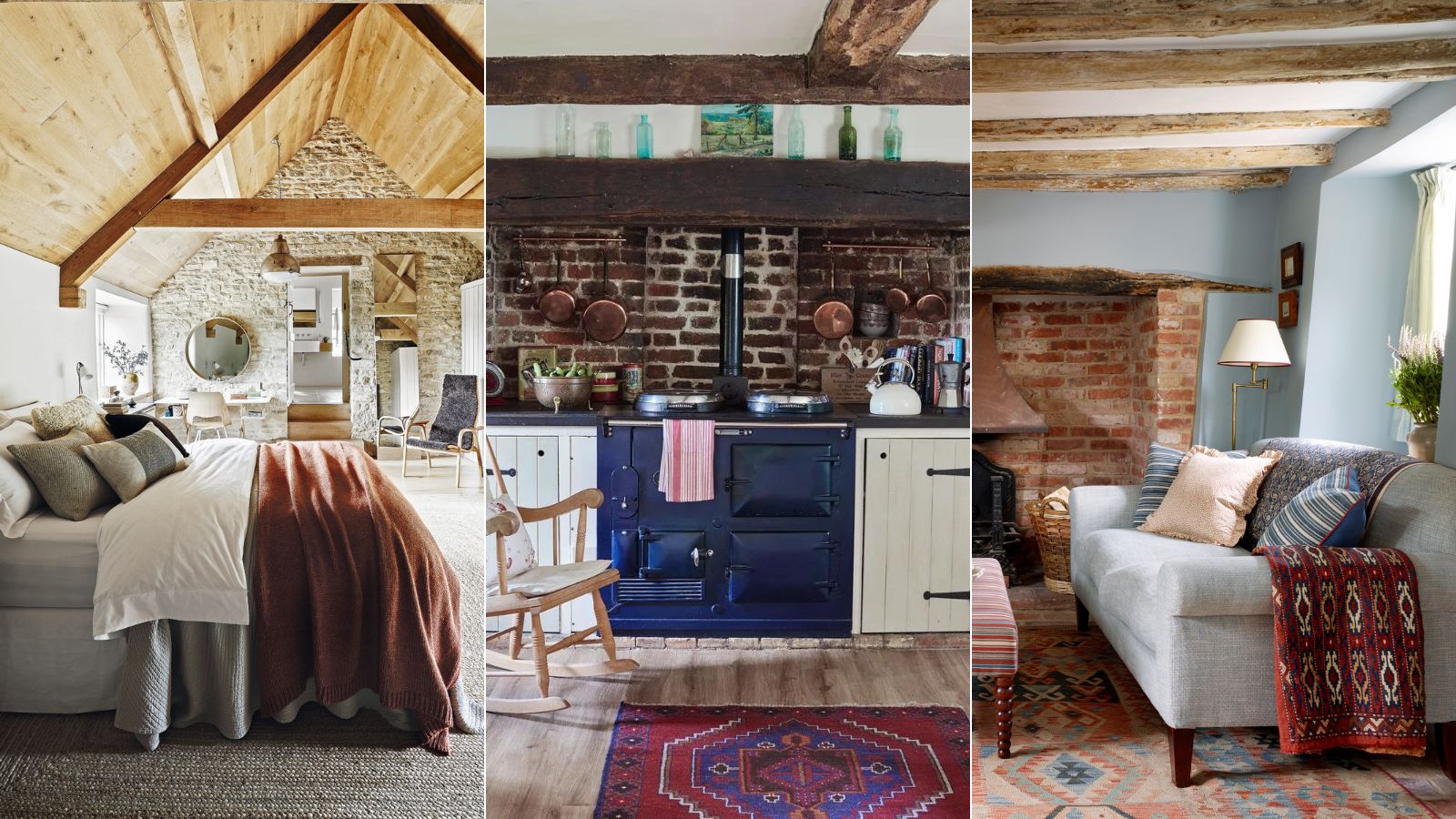

When you think of cozy, characterful interiors, cottage style likely comes to mind. Filled with historic charm and embracing the quirks and original features that come with them, cottage interiors are a timeless aesthetic that continue to transcend trends.
Although cottages in different countries and of different ages have their own unique appeal, they all have key elements that define the style. Whether exposed beams take center stage, original shiplap paneling is restored, or sloped ceilings are used to create a cozy bedroom nook, there are plenty of cottage decorating ideas that embrace the style.
So, what exactly defines cottage style, and how you can elevate your interiors with it? We've asked interior designers and experts to weigh in on the core elements of cottage style.
What is cottage style?
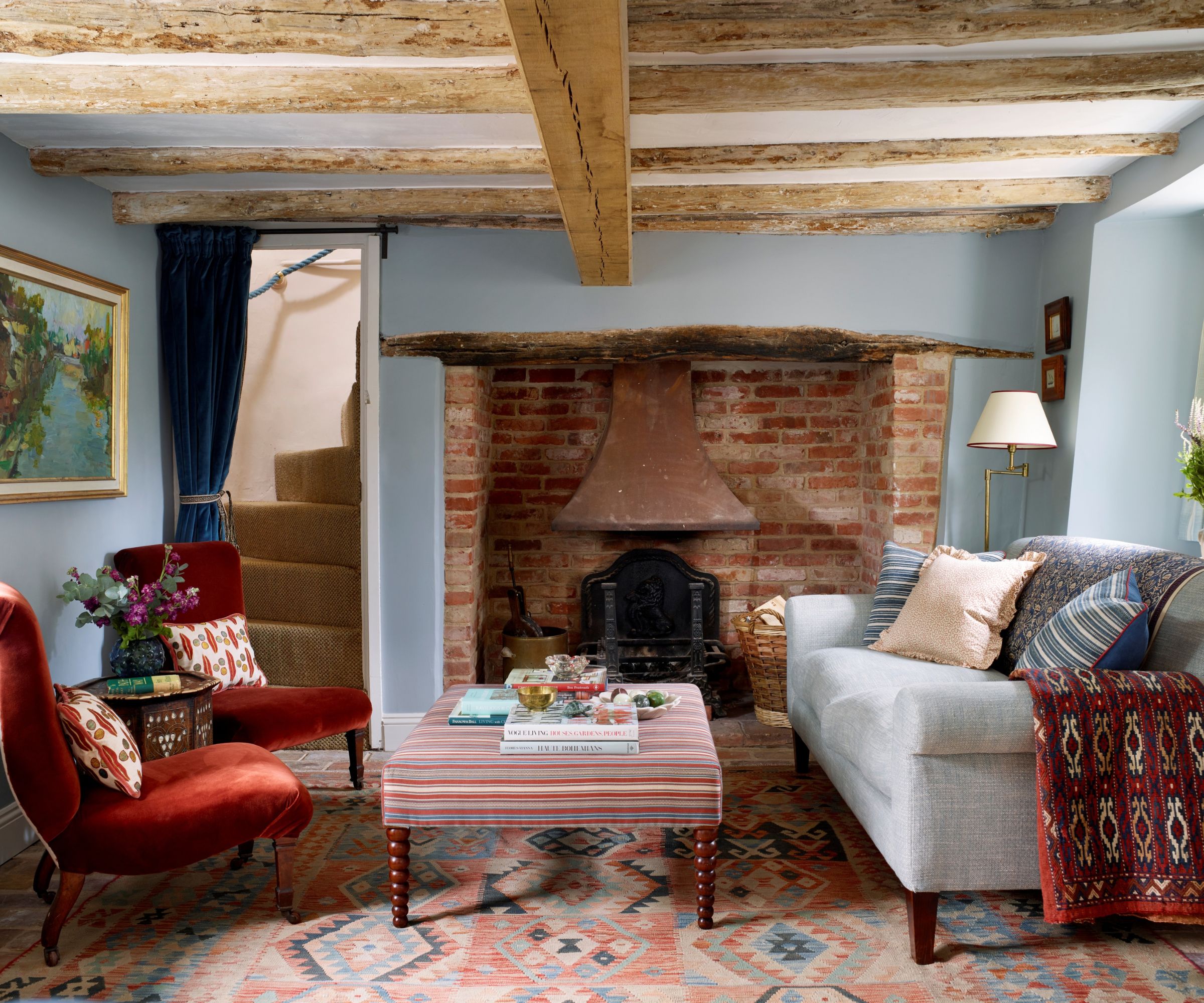
Cottage interiors are defined by cozy spaces, eclectic furniture, and a sense of history embedded in its foundations. There is often a strong element of country decor that runs through this aesthetic – cottage homes are synonymous with the countryside and the rural lifestyle that comes with it.
'For me, cottage style is an interplay between comfort and whimsy, a narrative of textures and colors that speak to simplicity and warmth. It's a style that embraces the eclectic, where every piece tells a story, and there's a harmonious disarray that somehow feels both curated and assembled. It’s the embodiment of cozy and one that we love to embrace,' says interior designer Lauren Gilberthorpe.
Coziness and imperfection are at the heart of cottage style. The idea that nothing is too precious and the pieces within them are loved, cherished, and handed down is what creates a charming atmosphere and non-pretentious aesthetic.
'Cottage style creates a sanctuary where the hustle of daily life dissolves into the soft embrace of the interiors. The style ushers in an air of warmth, crafting spaces that are not just seen but felt, inviting you to unwind in an understated elegance and personal history that resonates with who you are and how you want to live,' adds Lauren.
What are the key design elements of cottage style?
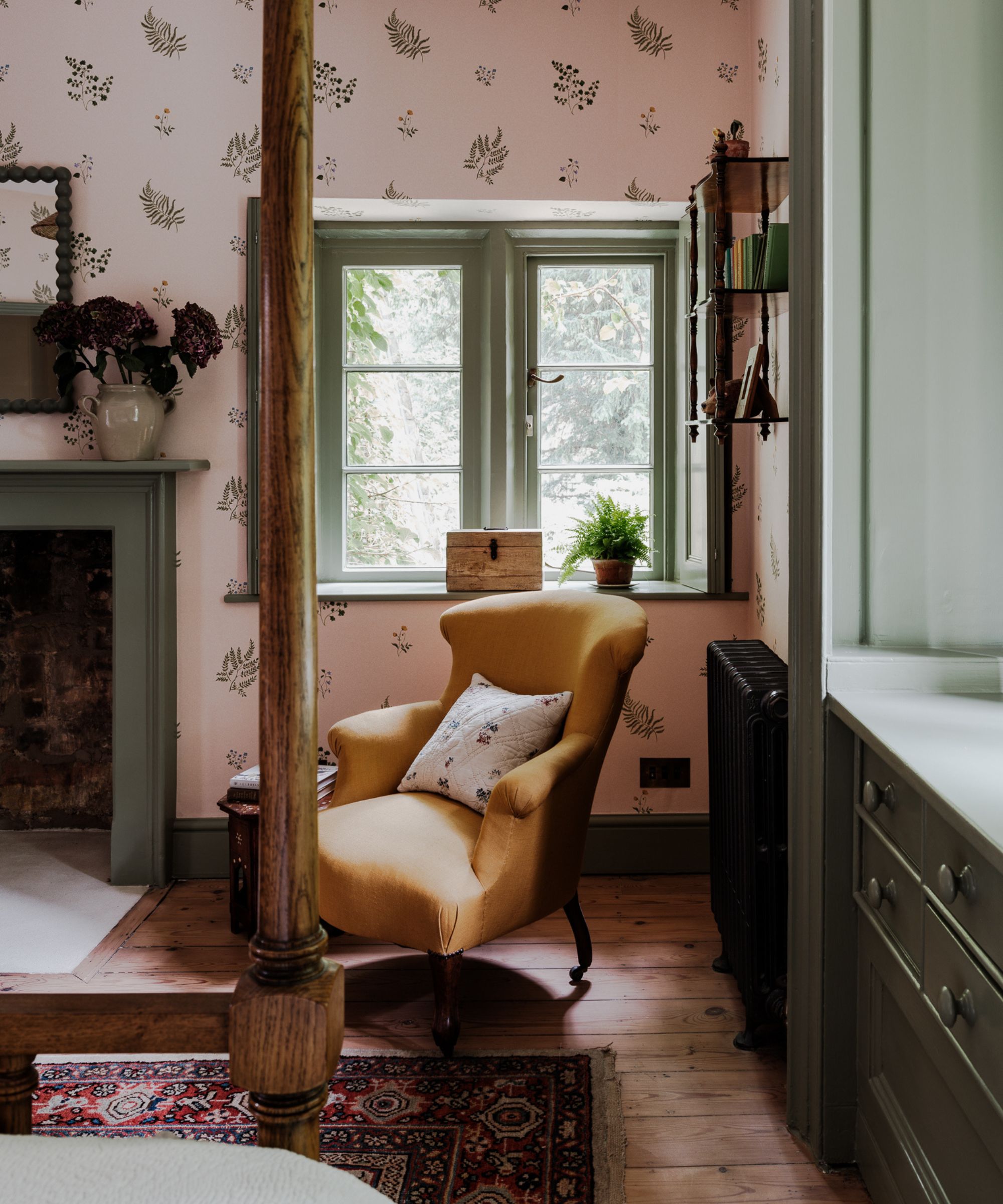
There are a few design elements that are key to creating a successful scheme infused with cottage style. From the color palette and textures to the style of furniture, consider introducing elements that evoke a cozy atmosphere.
Interior designer Anna Haines describes cottage style as 'comfortable, layered with textiles and antiques, nostalgic and inviting. I think it wants to feel friendly, unpretentious, and just nicely on the right side of worn!' This imperfect, lived-in approach to furniture and decor is key to the style, introducing a sense of rustic charm.
When choosing furniture that leans into cottage style, look for pieces that look and feel cozy and more traditional forms. Opt for 'comfortable and plush sofas, ottomans upholstered in antique textiles hardy enough for weary feet as well as heaps of books, wrought iron beds, and the odd battered leather armchair,' suggests Anna.
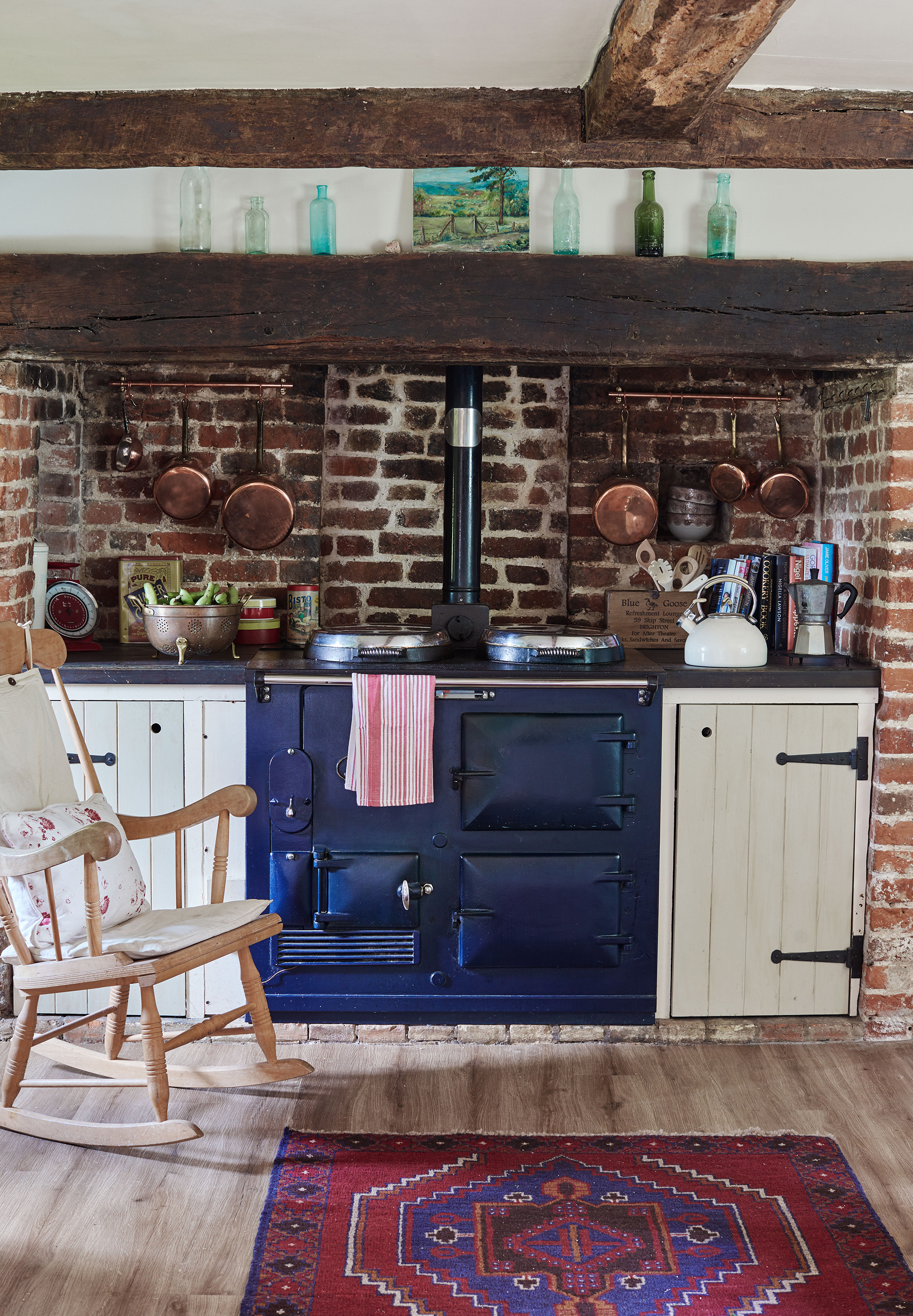
As with all interior design styles, color is another design element that requires some attention. 'The cottage style is an eclectic blend of country living charm and calming hues to create a bucolic retreat. Blend easygoing off-whites and neutrals with paired down pastels to create a quaint color palette,' says Arianna Barone, color marketing manager at Benjamin Moore.
'Cottage style should include a charming mix of design elements. Favorites include whitewashed floors, timeworn cabinets, bead board, lots of fresh-cut flowers, and garden-fresh greenery,' she adds.
How to decorate with cottage style
1. Use neutral colors and earthy hues
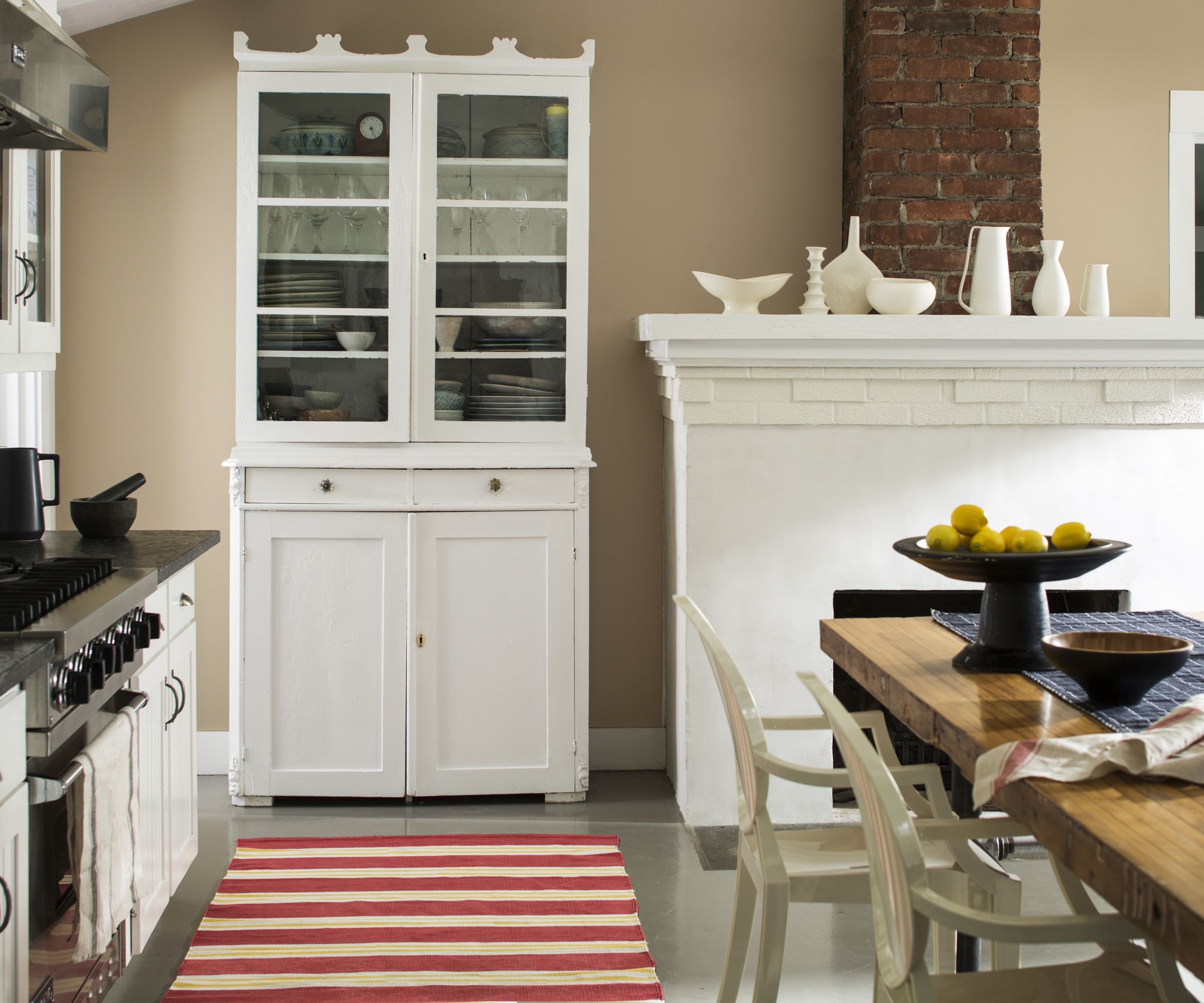
The color you choose to paint a space impacts the atmosphere you create, so in a cottage style home, opt for a neutral color scheme, muted hues, and earthy tones for an authentic look.
'Colors like Floral White OC-29, Sail Cloth OC-142 and Coastal Path AF-380 look beautiful on all four walls and on textured accents like bead board and shiplap,' says Arianna. 'The space should have character and feel well-loved and lived in. A crisp white paint color, like Super White OC-152, is a great option to layer in some additional contrast,' she adds.
This doesn't mean you have to stick to a white, minimalist palette. Injecting richer hues can add character and depth to a space, which is integral to cottage style. 'Warm earthy and rich tones to counter the more robust finishes you can often expect to find in cottages - bold yellows, muddy pinks, and deep reddish browns are a good starting point,' explains Anna.
2. Introduce a blend of old and new
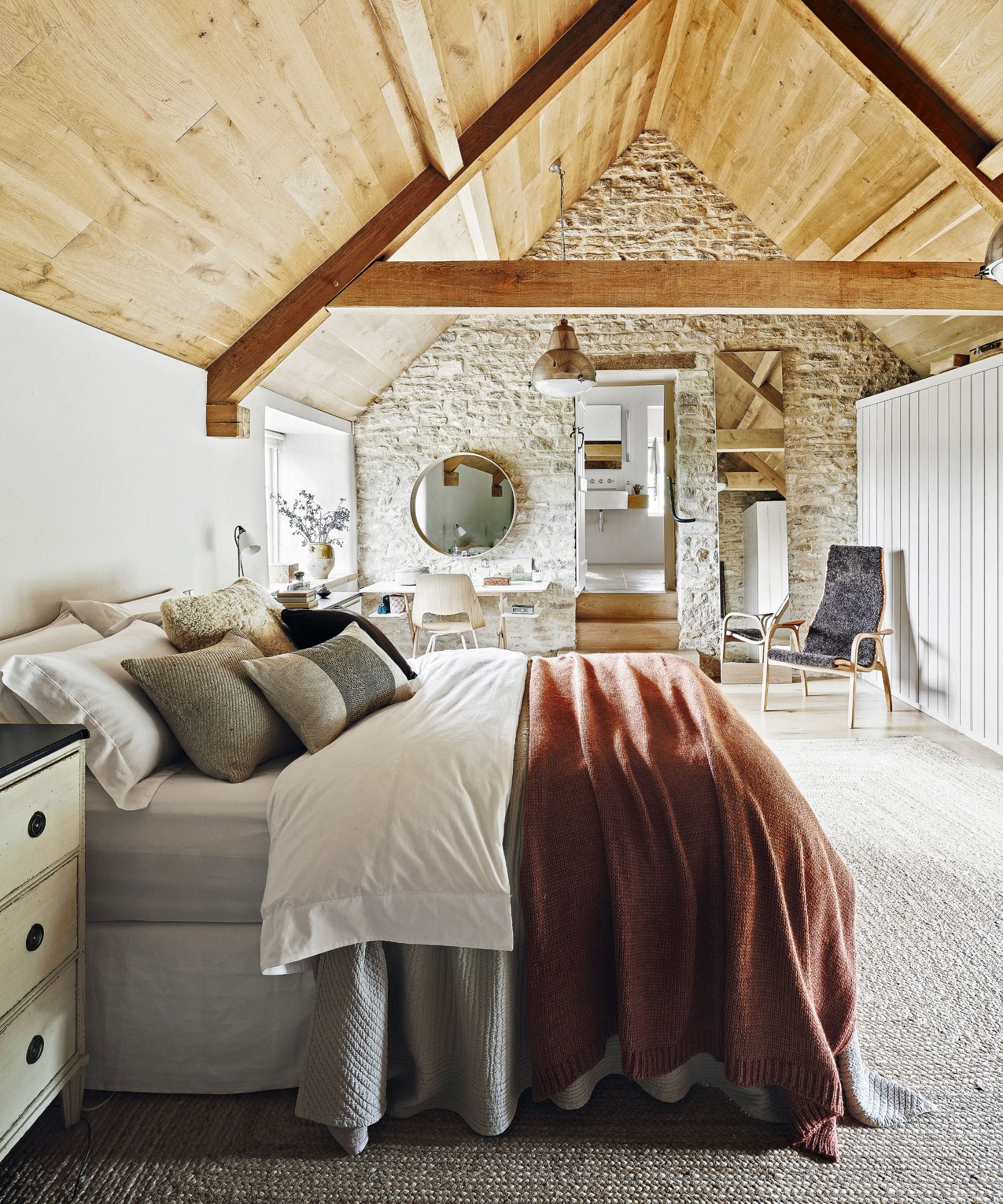
To achieve a balance of cottage charm and timeless appeal, introduce a mix of older pieces with modern additions. 'Mix in those vintage finds with contemporary pieces, allowing the juxtaposition to create a space that is both timeless and deeply personal. As always, embrace the imperfect, celebrate the handcrafted, and let your space be a testament to the beauty of blending stories and styles,' advises Lauren.
When choosing newer items, look to pieces that are made to a high standard and that will not only last, but wear beautifully. 'As well as a well-curated selection of antiques, it can be helpful to consider a few bespoke pieces to make the most of narrow or smaller rooms, and usurp what may otherwise feel like dead spaces with just the right scale sofa or footstool,' suggests Anna.
3. Add ambient lighting

Introducing additional light sources can benefit cottage style interiors in a few ways. On one hand, they add that cozy ambiance that is core to the style. But they are also great for adding extra brightness in rooms that are on the smaller side or simply don't benefit from as much natural light.
'Try and limit the use of recessed ceiling lights (as often cottage ceilings can be quite low) in favor of table and standard lamps to give more dedicated pockets of light,' advises Anna. Add charming table lamps to cottage living rooms and bedside tables for an added glow, and opt for lampshades with color and pattern for added interest.
4. Opt for cozy furniture
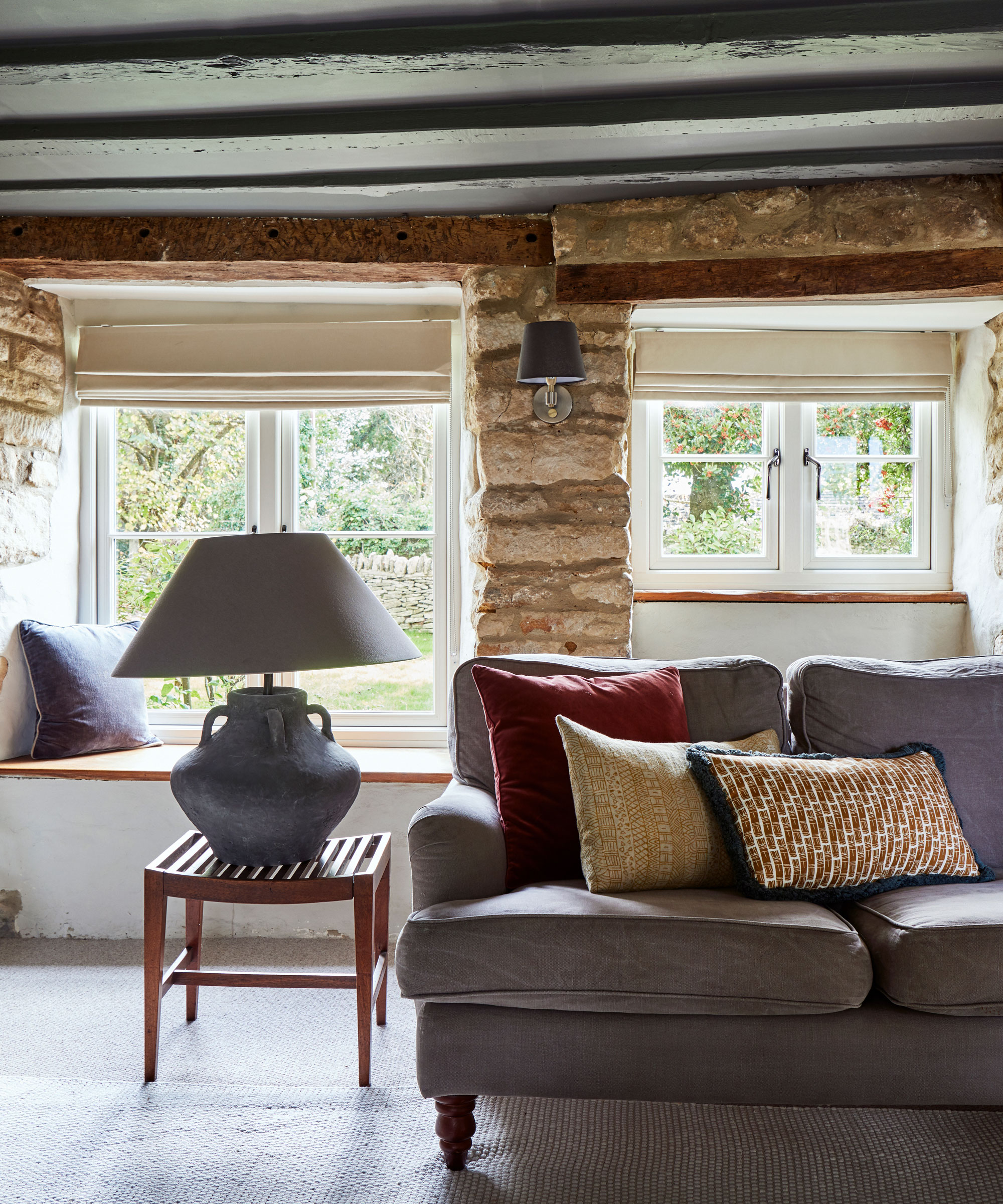
Striking a balance between comfort and style can sometimes be tricky, but it's at the forefront of cottage style. Choose more traditional sofa styles upholstered in a soft, detailed fabric, and opt for antique tables and sideboards for timeless appeal.
'Furniture within the cottage style is a dialogue between time and texture, where each piece is chosen for its story and its ability to contribute to an overarching narrative of comfort and charm,' says Lauren. 'From rustic, weathered woods to the soft embrace of plush textiles, each piece is curated to add depth and personality to the space,' she adds.
5. Make a feature of unique architecture
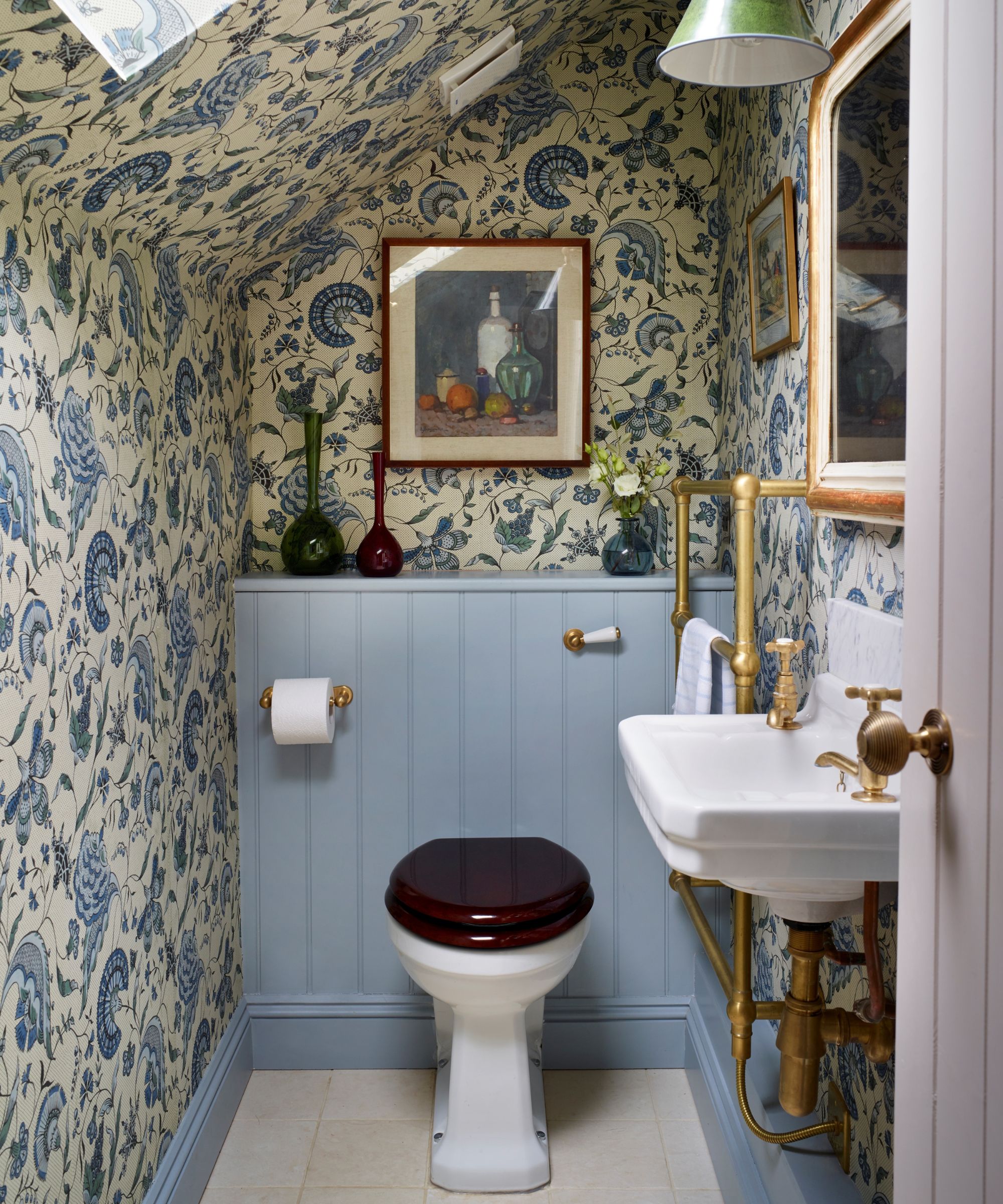
Much of the charm associated with cottage style is the original features – think exposed brick walls and original ceiling beams. Allowing these components to really shine will add character to your home. 'Having the right bones to your home really helps. Exposed beams and brick walls are synonymous with cottage style,' adds Anna.
Alongside these features, older properties are likely to have some quirks to them, whether it's a slightly uneven wall or, more commonly, sloped ceilings. Instead of seeing them as a hindrance, think about how you can make them work in your design. 'Often bedroom or attic ceilings are sloping in cottages. We like to treat the walls and ceiling as one canvas in these instances and envelop the space in a small-scale wallpaper. It helps a room feel more seamless with no obvious full-stops,' she explains.
Creating a home with cottage style is simpler than you might think. Introduce elements that imbue coziness and charm, let original features and quirks shine, and mix antique pieces with modern additions for a timeless balance. The key is to create a home that feels lived-in and loved. We love cottage style for its character and homely appeal, so keep this in mind when designing your scheme.
Sign up to the Homes & Gardens newsletter
Design expertise in your inbox – from inspiring decorating ideas and beautiful celebrity homes to practical gardening advice and shopping round-ups.

I’ve worked in the interiors magazine industry for the past five years and joined Homes & Gardens at the beginning of 2024 as the Kitchens & Bathrooms editor. While I love every part of interior design, kitchens and bathrooms are some of the most exciting to design, conceptualize, and write about. There are so many trends, materials, colors, and playful decor elements to explore and experiment with.
-
 How to get rid of bean seed flies – a pest control expert reveals how to keep crops safe from these seed munchers
How to get rid of bean seed flies – a pest control expert reveals how to keep crops safe from these seed munchersAs their name implies, these insects primarily feed on bean crops
By Tenielle Jordison
-
 Sarah Michelle Gellar's kitchen cabinets are moody yet elevated – I've always used dark paint with caution, but they make bolder tones accessible
Sarah Michelle Gellar's kitchen cabinets are moody yet elevated – I've always used dark paint with caution, but they make bolder tones accessibleThe actress's black kitchen cabinets are bold yet palatable, proving that this dark shade is a trendy yet timeless color pick
By Hannah Ziegler
